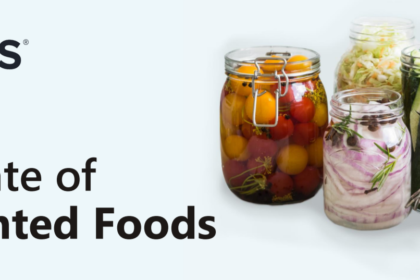
Miso, frozen yogurt and pickled and fermented vegetables are driving growth in the $10.97 billion fermented food and beverage category. The fermented products space grew 3.3% in 2021, outpacing the 2.1% growth achieved by natural products overall.
“It really highlights how functional products have become the norm for shoppers when they’re in stores,” says Brittany Moore, Data Product Manager for Product Intelligence at SPINS LLC, a data provider for natural, organic and specialty products. Moore notes there’s an “explosion of functional products” in the market — “[they] are appearing everywhere. And fermented products have been leading that space in the natural market for years.”
The data was shared during TFA’s conference, FERMENTATION 2021. SPINS worked with TFA to drill into data covering 10 fermented product categories and 64 product types (an increase from last year). [A note that wine, beer and cheese sales are excluded from the data. These categories are very large, and would obscure trends in smaller segments. Wine, beer and cheese are also well-represented by other organizations.]
Yogurt dominates the fermented food and beverage landscape with 75% of the market, but sales growth is soft. Frozen yogurt and plant-based offerings, though small portions of the yogurt category, are fueling what growth there is. “Novelty products are catching shopper’s eyes,” Moore notes.
Kombucha, the fermented tea which led the U.S. retail revival of fermented products, still rules the non-alcoholic fermented beverages market, with 86% of sales. But growth is slowing. Moore points out that this slowdown is due to kombucha having penetrated the mass market with lots of brands on grocery shelves.
“There’s opportunity in kombucha for new innovations to catch the progressive shopper’s eye,” Moore says. “Shoppers are looking for an innovative twist to their functional product.”
Moore points to successful twists like hard kombucha, which grew nearly 60%, and probiotic sodas, which grew 31%.
Growth is slowing for hard cider, too, though hard cider leads the alcoholic beverages category with 83% share of sales.
All sectors of the pickled and fermented vegetables category are growing, totalling nearly $563 million in sales. Refrigerated products are nine of the top 10 subcategories here. The “other” pickled vegetable subcategory is increasing at a 60% growth rate, “other” being the catch-all for vegetables that are not cucumbers, cabbage, carrots, tomatoes, beets or ginger. Fermented radish, garlic and seaweed fall into this subcategory.
Soy sauce is not surprisingly still the largest product in sauces, representing 58% of the category. But that share is dropping. Gochujang is the growth leader, increasing at rate of nearly 20%.
Miso and tempeh are also performing well, which Moore attributes to the growing plant-based movement and the Covid-19 pandemic pantry stocking boom. Miso products — soups, broths, pastes and mixes — totaled over $24 million in sales in 2021. Though instant soups and meal cups represented only 8% of sales, they grew more than 110%.
